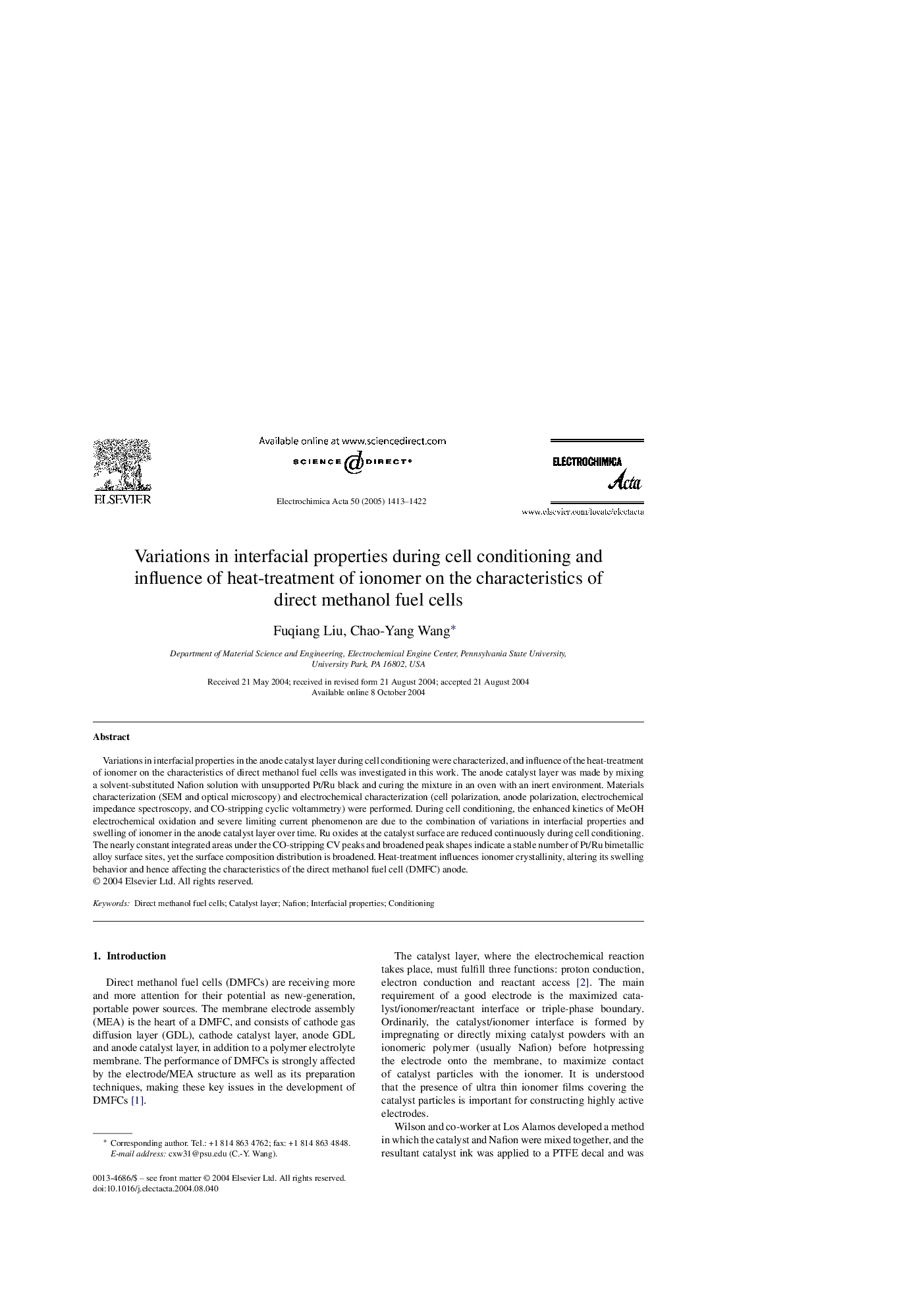| Article ID | Journal | Published Year | Pages | File Type |
|---|---|---|---|---|
| 10269784 | Electrochimica Acta | 2005 | 10 Pages |
Abstract
Variations in interfacial properties in the anode catalyst layer during cell conditioning were characterized, and influence of the heat-treatment of ionomer on the characteristics of direct methanol fuel cells was investigated in this work. The anode catalyst layer was made by mixing a solvent-substituted Nafion solution with unsupported Pt/Ru black and curing the mixture in an oven with an inert environment. Materials characterization (SEM and optical microscopy) and electrochemical characterization (cell polarization, anode polarization, electrochemical impedance spectroscopy, and CO-stripping cyclic voltammetry) were performed. During cell conditioning, the enhanced kinetics of MeOH electrochemical oxidation and severe limiting current phenomenon are due to the combination of variations in interfacial properties and swelling of ionomer in the anode catalyst layer over time. Ru oxides at the catalyst surface are reduced continuously during cell conditioning. The nearly constant integrated areas under the CO-stripping CV peaks and broadened peak shapes indicate a stable number of Pt/Ru bimetallic alloy surface sites, yet the surface composition distribution is broadened. Heat-treatment influences ionomer crystallinity, altering its swelling behavior and hence affecting the characteristics of the direct methanol fuel cell (DMFC) anode.
Related Topics
Physical Sciences and Engineering
Chemical Engineering
Chemical Engineering (General)
Authors
Fuqiang Liu, Chao-Yang Wang,
